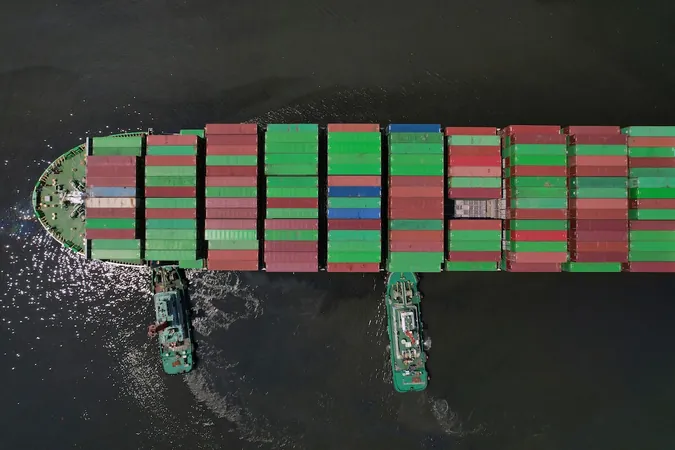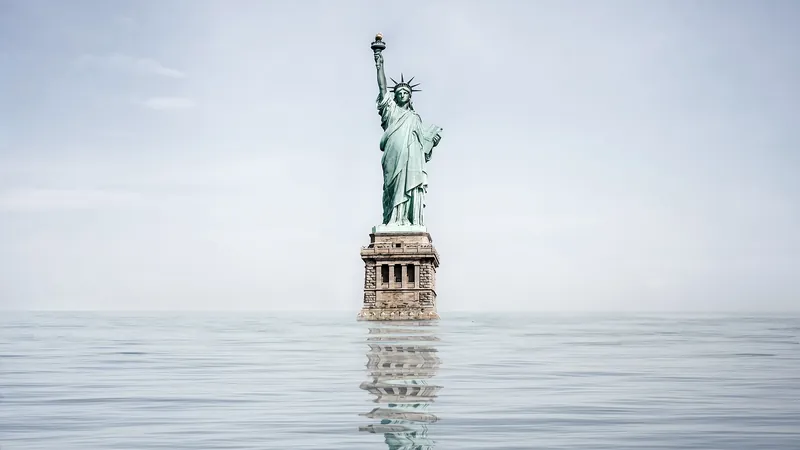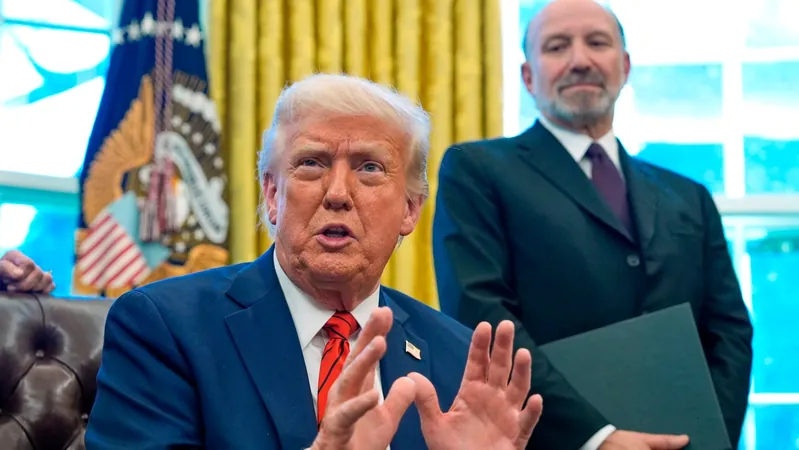
How Trump's Tariffs are Disrupting Global Supply Chains—What You Need to Know!
2025-04-08
Author: Jacob
Introduction
The ongoing trade war initiated by former U.S. President Donald Trump is currently reshaping global supply chains at an unprecedented pace. Companies around the world are being compelled to rethink their strategies, redirect shipments, and find alternative suppliers as strict new tariffs come into effect.
Impact on the Automotive Sector
Major automotive players like Jaguar Land Rover and Volkswagen's Audi brand have halted car shipments to the United States from Europe, a direct response to escalating tariffs. Moreover, Stellantis, the multinational automotive manufacturing corporation, has suspended production at its factories in Windsor, Ontario, and Toluca, Mexico.
Challenges in the Food and Confectionery Sector
In the food and confectionery sector, Swiss chocolate-maker Lindt & Sprüngli has opted to supply Canada from its European facilities rather than its U.S. plants to circumvent counter-tariffs imposed by Canada on American goods. Jim Kilpatrick of Deloitte stated, "Companies that have the flexibility to adjust their supply chains are making strategic moves. No one wants to pay additional costs if they can avoid it.”
Tariff Rates and Their Disruption
Trump’s imposition of a baseline 10% tariff on imports, with significantly higher rates for certain trading partners, is disrupting the previously integrated global economy. For decades, businesses have spent substantial resources crafting extensive supply chains that not only minimize costs but also enhance efficiency by sourcing components and products from various countries. The new tariffs, some of the highest in a century, are compelling companies to reconsider their operational methodologies.
Canada's Response and Tariff Escalation
In a more dramatic escalation, Canada announced tariffs as high as 25% on vehicles imported from the U.S., intensifying the existing trade conflict. Supply chain experts note that while companies are making smaller adjustments, such as re-evaluating where to send inventory, they are unlikely to relocate large manufacturing plants due to the substantial costs involved.
Global Supply Chain Adjustments
As Timothy Webb from KPMG Canada noted, "Although multinationals are slow to relocate, they are already rethinking their production and distribution networks." Firms are now weighing various logistics strategies, such as whether to distribute products from one factory over another based on seasonal demand.
Broader Implications Beyond China
This trade disruption is significantly broader than the difficulties faced during Trump’s first term, where tariffs were primarily directed at China. This time, the U.S. is also targeting countries like Vietnam, Thailand, and Indonesia, which previously benefited from an influx of production moving away from China. David Warrick, a supply chain risk management expert, indicated that the ongoing escalation is leaving many manufacturers at a crossroads: "Where do you go for other opportunities? Everybody has been hit right now."
Exploring Alternative Suppliers
Companies may turn to suppliers in countries facing lower tariffs, such as the Philippines and Malaysia, but relocating production and building new supplier relationships can take years. This poses a considerable risk, especially in a rapidly changing American trade landscape.
Industry-Specific Challenges
For certain industries, finding alternative suppliers is relatively straightforward. For instance, U.S. importers of concrete can shift from China, now facing severe tariffs, to Turkey, which has a significantly lower tariff rate. However, niche markets present a different challenge. As Philip Damas of Drewry stated, some specialized products are only available from specific countries. This has forced some companies to accept hefty price increases due to their reliance on niche suppliers, echoing how vulnerable they are to tariff changes.
Investment Relocation Concerns
Trump’s promise that companies could sidestep tariffs by moving production to the U.S. has led some, particularly mid-sized Canadian firms, to consider this a pivotal moment for relocating investments. Yet the uncertainty regarding the permanence of these tariffs complicates substantial investment decisions.
Opportunities for Canada
Canada is presently in a relatively advantageous position amidst these turbulent changes. Although facing some tariffs, Canada and Mexico were excluded from the most recent slate of tariffs implemented by the U.S., lowering their effective rates relative to other nations. According to Stuart Bergman from Export Development Canada, "This situation could be an opportunity for Canada to capture market share in specific sectors."
The Path Forward
Ultimately, Canada must enhance its competitiveness to thrive in a world thrown into upheaval by U.S. protectionist policies. Bergman expressed hope that this period will drive Canadian exporters to invest in resilience, productivity, and building diverse trade links. “We may look back at this as a transformative moment that compelled us to tackle necessary challenges,” he remarked.
Conclusion
As the global supply chain landscape continues to evolve due to these tariffs, businesses must remain agile and innovative to navigate the complexities ahead. The ramifications of Trump's trade policies may just be the wake-up call that economies need to adapt and thrive in a new international trade environment.









 Brasil (PT)
Brasil (PT)
 Canada (EN)
Canada (EN)
 Chile (ES)
Chile (ES)
 Česko (CS)
Česko (CS)
 대한민국 (KO)
대한민국 (KO)
 España (ES)
España (ES)
 France (FR)
France (FR)
 Hong Kong (EN)
Hong Kong (EN)
 Italia (IT)
Italia (IT)
 日本 (JA)
日本 (JA)
 Magyarország (HU)
Magyarország (HU)
 Norge (NO)
Norge (NO)
 Polska (PL)
Polska (PL)
 Schweiz (DE)
Schweiz (DE)
 Singapore (EN)
Singapore (EN)
 Sverige (SV)
Sverige (SV)
 Suomi (FI)
Suomi (FI)
 Türkiye (TR)
Türkiye (TR)
 الإمارات العربية المتحدة (AR)
الإمارات العربية المتحدة (AR)